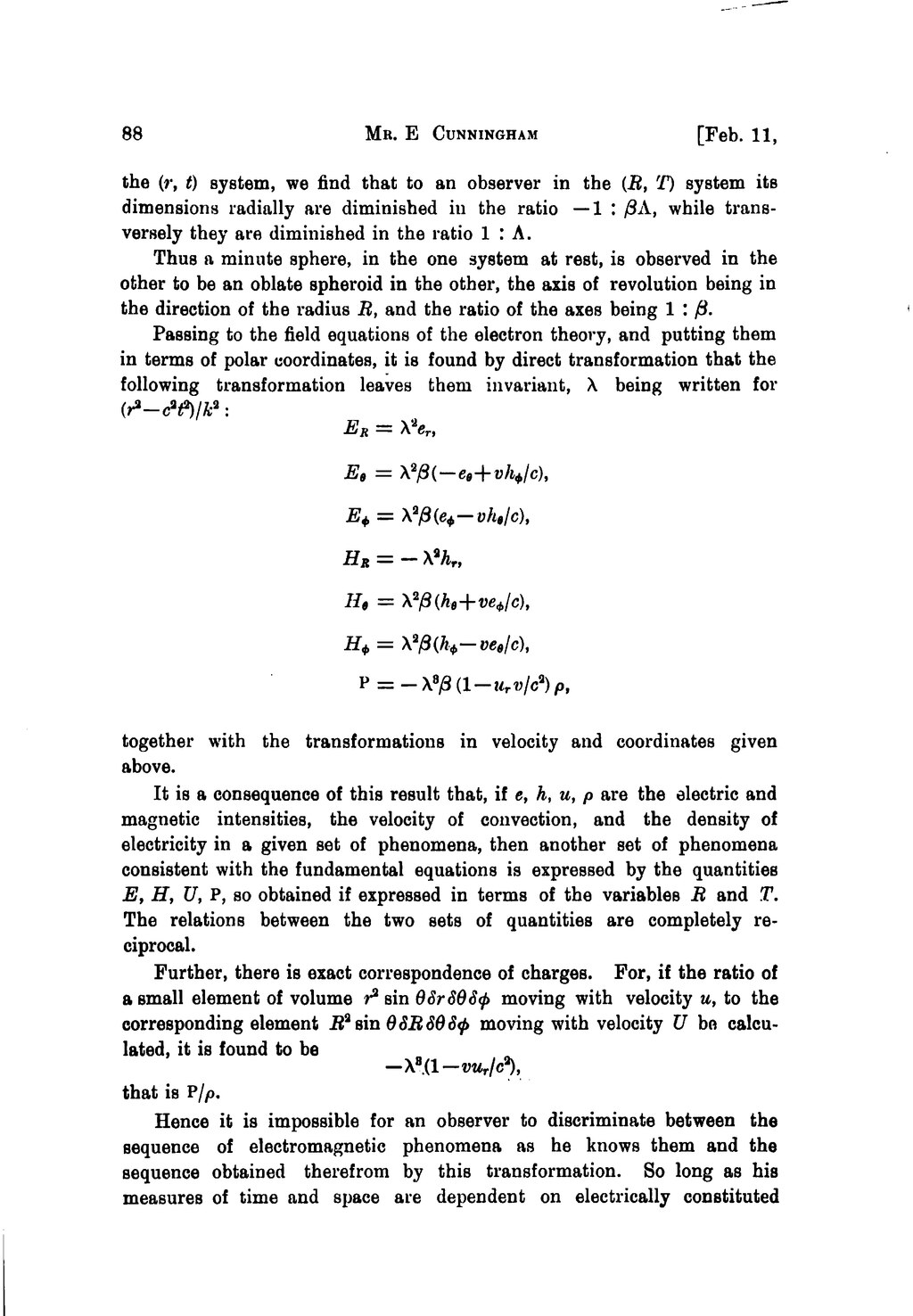the (r, t) system, we find that to an observer in the (R, T) system its dimensions radially are diminished in the ratio , while transversely they are diminished in the ratio .
Thus a minute sphere, in the one system at rest, is observed in the other to be an oblate spheroid in the other, the axis of revolution being in the direction of the radius R, and the ratio of the axes being .
Passing to the field equations of the electron theory, and putting them in terms of polar coordinates, it is found by direct transformation that the following transformation leaves them invariant, λ being written for :
together with the transformations in velocity and coordinates given above.
It is a consequence of this result that, if e, h, u, ρ are the electric and magnetic intensities, the velocity of convection, and the density of electricity in a given set of phenomena, then another set of phenomena consistent with the fundamental equations is expressed by the quantities E, H, U, P, so obtained if expressed in terms of the variables R and T. The relations between the two sets of quantities are completely reciprocal.
Further, there is exact correspondence of charges. For, if the ratio of a small element of volume moving with velocity u, to the corresponding element moving with velocity U bo calculated, it is found to be
that is .
Hence it is impossible for an observer to discriminate between the sequence of electromagnetic phenomena as he knows them and the sequence obtained therefrom by this transformation. So long as his measures of time and space are dependent on electrically constituted









